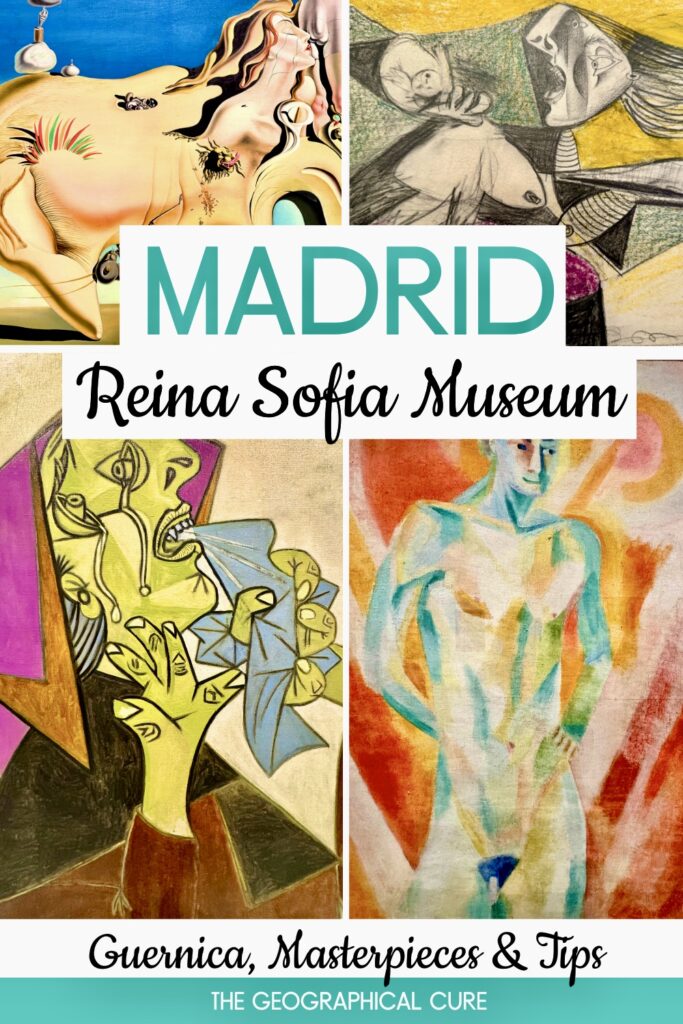Opened in 1986, the Reina Sofia Museum is famously home to Picasso’s masterpiece — Guernica. It’s a must visit in Madrid just to see this powerful painting and the photos and preparatory sketches displayed with it.
The Reina Sofia specializes in modern and contemporary art. Its permanent collection of 20th and 21st century art is strong on Spanish masters — Picasso, Dali, and Miro.
In 2005, the 18th century building was artfully expanded. Acclaimed French architect Jean Nouvel added a triangular extension for temporary exhibitions, a library, glass elevators, and a restaurant topped by a lattice roof.
Now, it’s like a miniature city of glass and steel.
>>> Click here to pre-book a ticket
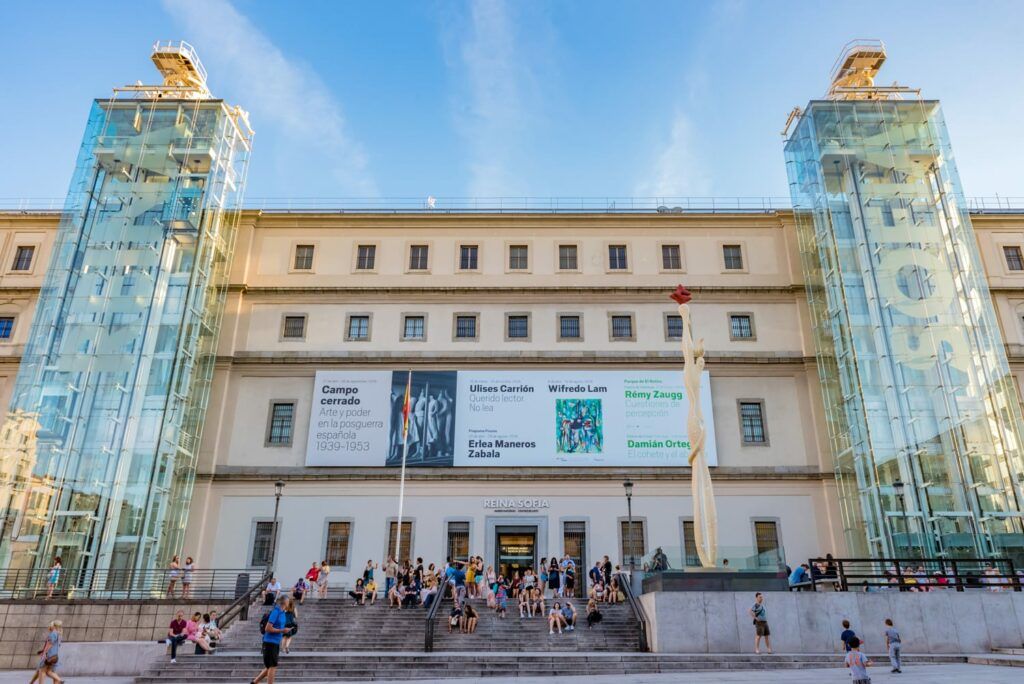
Here are some of the rooms you should hit on a visit:
- Room 202: early Surrealism (Miro and Picabia)
- Room 205: Dali works
- Room 206: Guernica, preparatory works & photos
- Room 209: Dali self-portrait & more Miros
- 1st & 3rd Floor: temporary exhibitions
- 4th Floor: Post-war abstract art
The building is quite large. Indeed, you could easily get lost. If you want to see the highlights without a struggle, I recommend booking a guided tour.
In this guide to the Reina Sofia, I identify the must see masterpieces and give you tips for visiting the museum.
Guide To The Reina Sofia: What To See
Picasso, Guernica
Guernica is the museum’s pièce de résistance and probably the most famous painting in Spain.
It’s massive (over 280 square feet), and you may feel like it’s wrapped around you. The size is part of its raw emotional power.
Picasso’s tortured monochromatic painting was created in a white heat of rage after the Nazis bombed of the town of Guernica in northern Spain. It depicts the horror, misery, and devastation that resulted from the senseless attack.
The 3 hour raid was carried out on General Franco’s orders and more than 2,000 people were massacred on market day. It was a “gift” to Hitler for his birthday, a test of the Luftwaffe’s ability to annihilate cities.
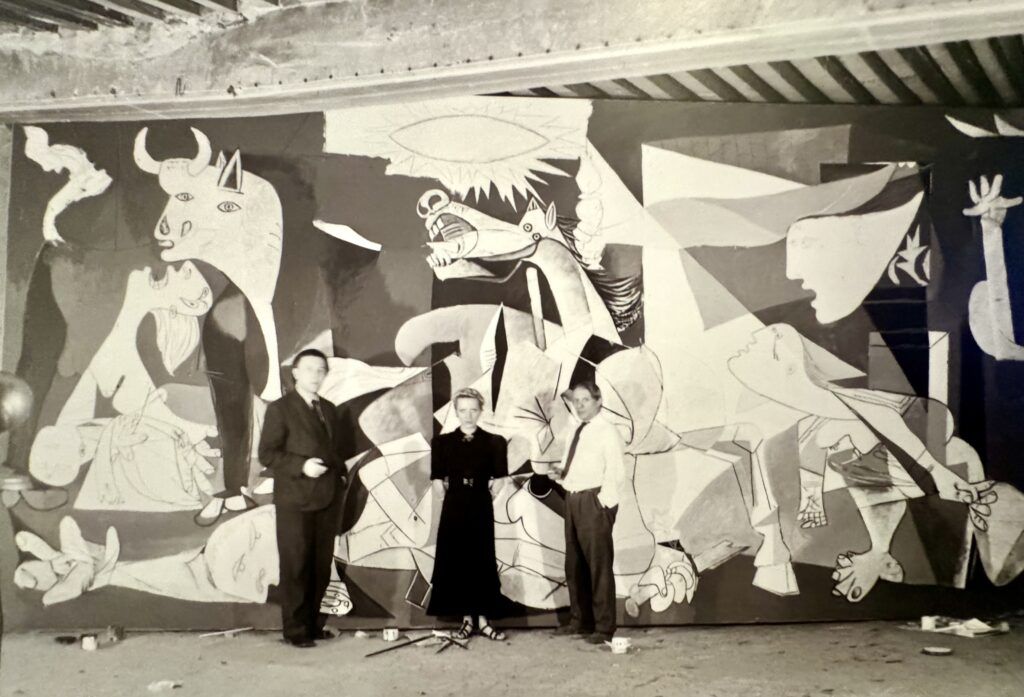
Until the bombing, Picasso hadn’t settled on a subject for his commission for the Spanish Pavilion of the World Fair.
He didn’t usually paint political themes. But his then partner, Surrealist photographer Dora Mara, urged him to capture the horror of war.
Picasso was reluctant at first, saying he would have “terrible problems” with the painting. Nonetheless, as a pacifist, he was “determined to do it … to arm for the war to come.”
The artist succeeded, churning out the greatest anti-war painting ever made. Guernica was an instant success and cemented Picasso’s reputation as the greatest painter of the 20th century.
At first glance, the painting appears to be a chaotic assortment of body parts. There’s death and dying everywhere. Eyes are dislocated, forms are fragmented, mouths are open, and tongues are shaped like daggers.

Art historians have puzzled over the gut wrenching Guernica for decades. Like many of his masterpieces, it’s littered with Picasso’s own problems and preoccupations.
You can easily see the village on the right and people running away in terror.
The dying horse in the center stands for pain and death, but is also an allusion to the horses of the apocalypse. Its head is twisted because of the heat of the bombs.
The bull, a frequent Picasso motif, represents the people of Spain. But the usually powerful creature looks rather impotent and frightened.
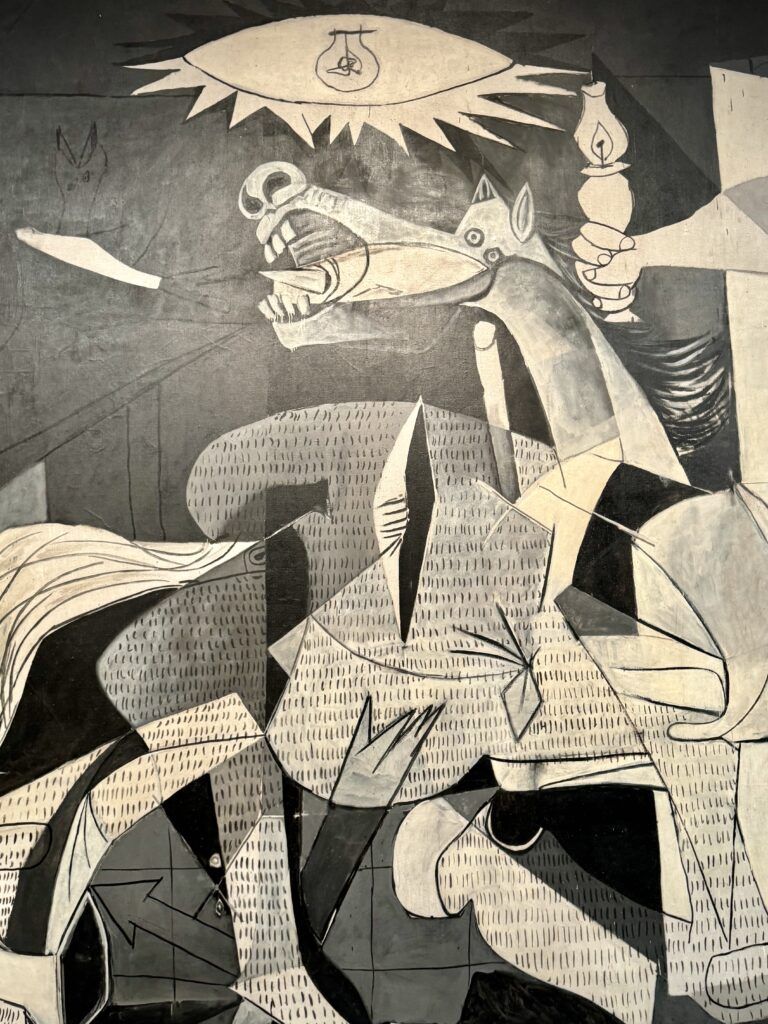
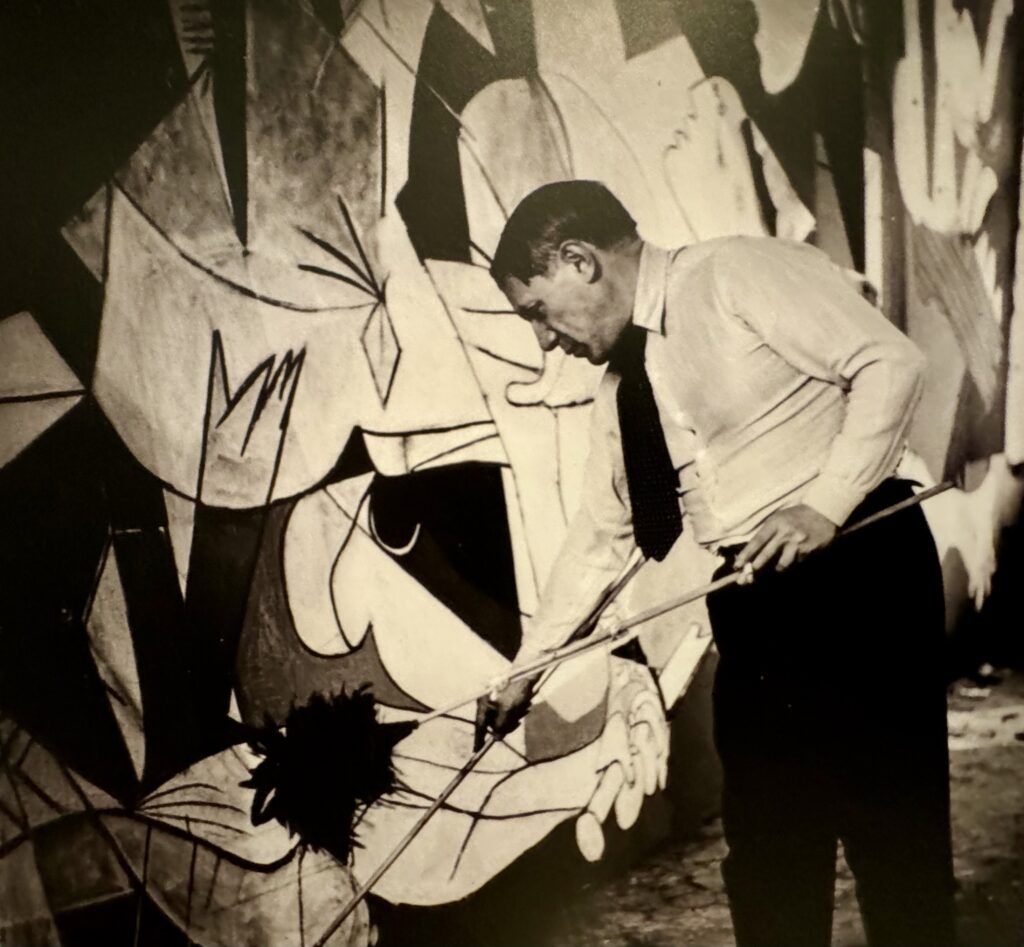
Others have argued that the bull represents the brutality and darkness of the fascist forces. This interpretation would account for why the bull seems unperturbed by the woman shrieking below.
The “weeping woman” is an image of Maar, who Picasso always portrayed as tortured.
In Guernica, she holds a dead child in her arms, like a modern pieta. Her tears seemed wired to her eyes, and she looks up to the sky screaming.
For six months after Guenica, Picasso painted the weeping woman image obsessively.
The lightbulb is interpreted as an “evil eye” or as technology that brings destruction rather than enlightenment.
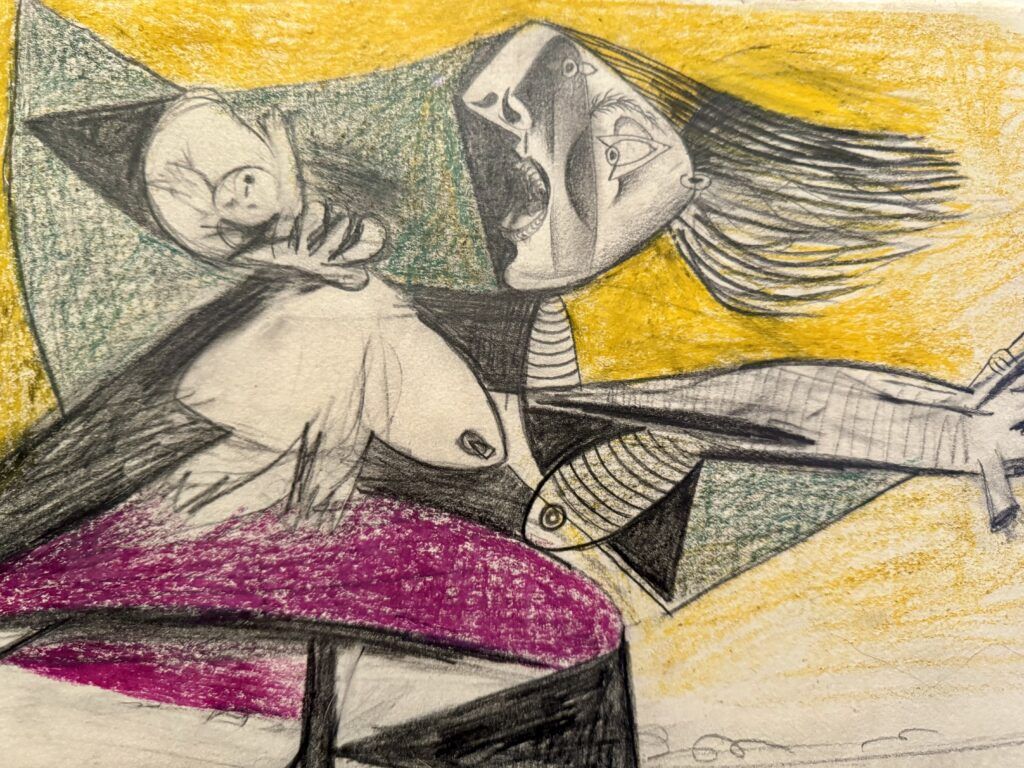
In contrast, the candle held by one of the figures may symbolize hope or the human spirit enduring through the darkness of war.
At the bottom of the composition lies a fallen soldier, dismembered and broken.
He holds a broken sword from which a flower grows. This could symbolize defeat, but also a sliver of hope for peace or regeneration.
One of the best things about the Guernica room is that you can see and feel Picasso’s creative process.
The room is filled with revealing photos of Picasso painting, taken by Maar, and numerous studies the artist created for the painting. In fact, this was the first photographic record of the creation of a modern artwork from start to finish.
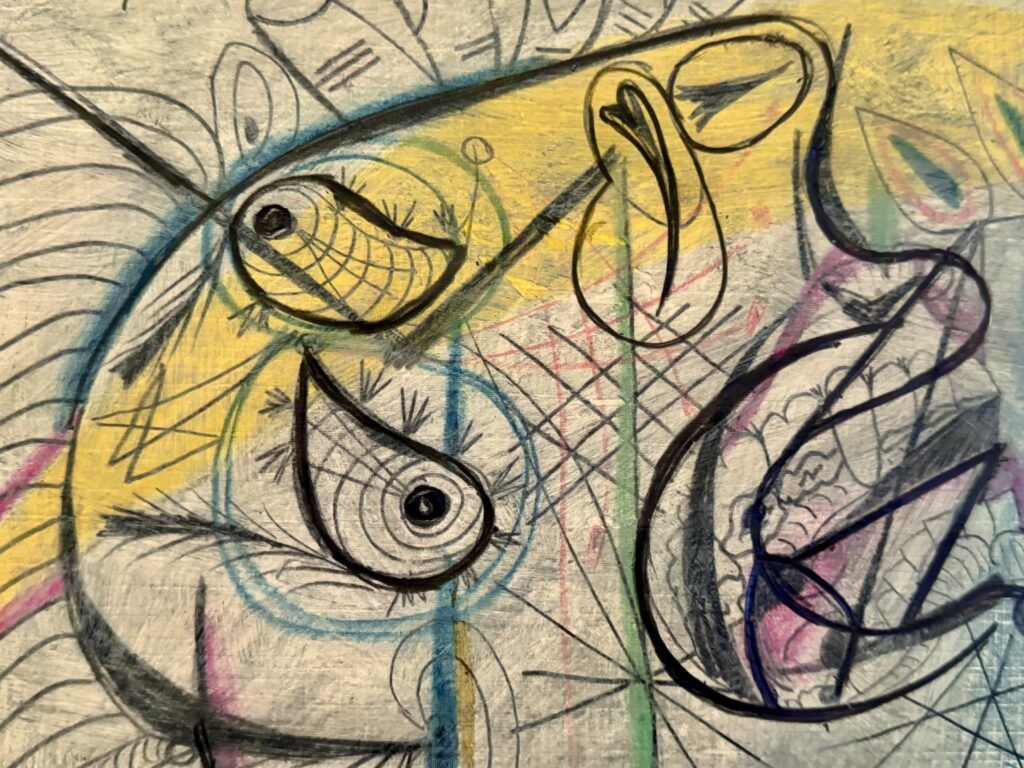
After the World Fair, Guernica went on an international tour and was returned to Picasso.
He refused to have it on Spanish soil until the country was a republic. So, Picasso lent it to the Museum of Modern Art in NYC, where it stayed for decades.
It wasn’t until 1981, after Franco’s death in 1975, that Guernica finally returned from exile.
Picasso had wanted the painting in the Prado in the same room as Velazquez’ Les Meninas and Goya’s The Third of May. But, because it was a work of modern art, it went to the Reina Sofia.
Since its debut in 1937, Guernica has become a timeless classic representing the horror of all wars.
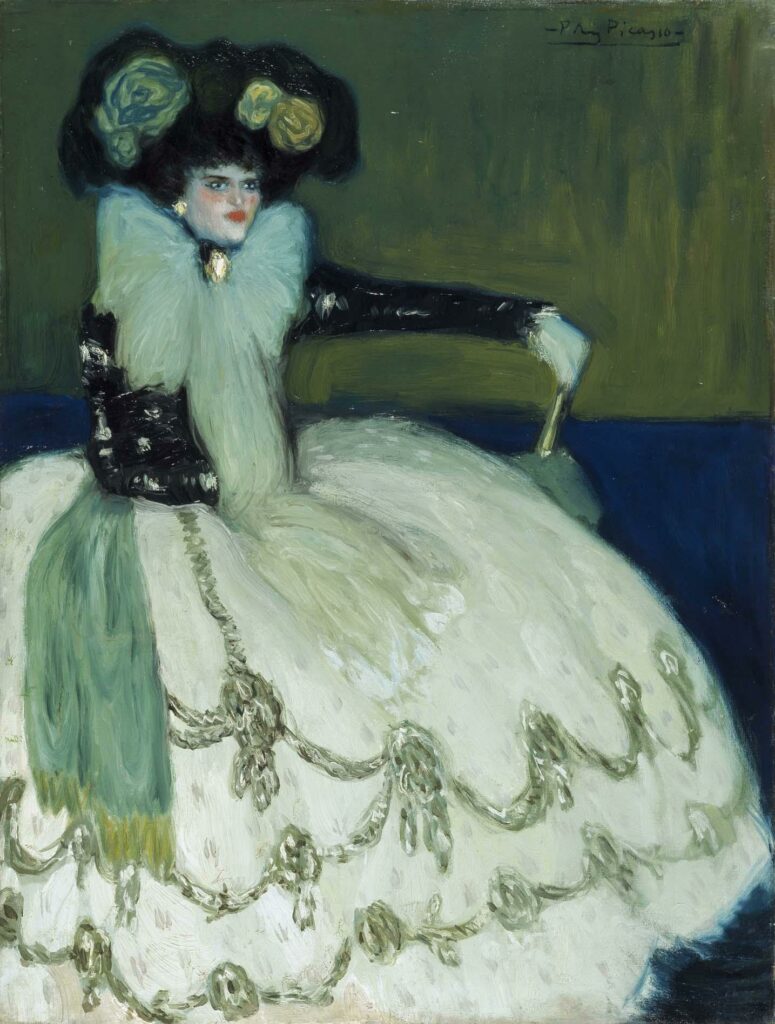
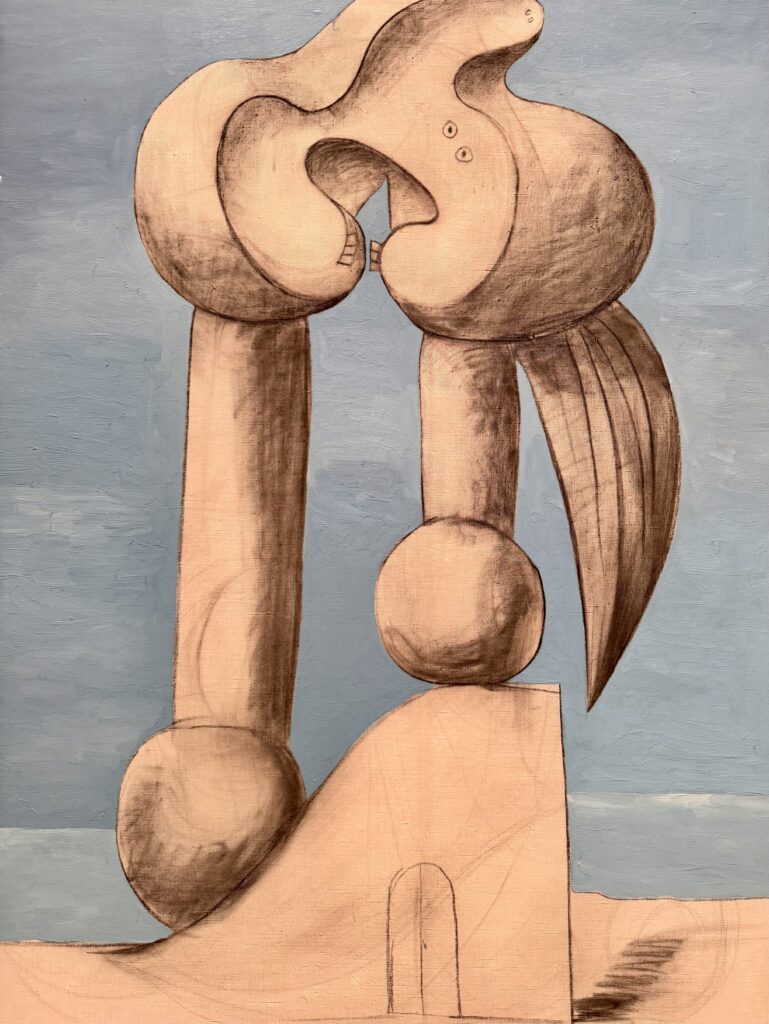
Other Picasso Paintings
The museum has quite a number of Picasso paintings.
There are works from many of his different periods — Blue Period, Cubism, Surrealism, and Classicism. Picasso was an artist that never stopped inventing.
The bulk of the museum’s artworks are from his Cubist period. Picasso deconstructed objects and figures into geometric forms, basically abandoning traditional perspectives of representation.
You can see pieces from his analytic cubism and synthetic cubism period. The earlier analytic style break down objects into fragmentary images, whereas the synthetic style flattened out the images.
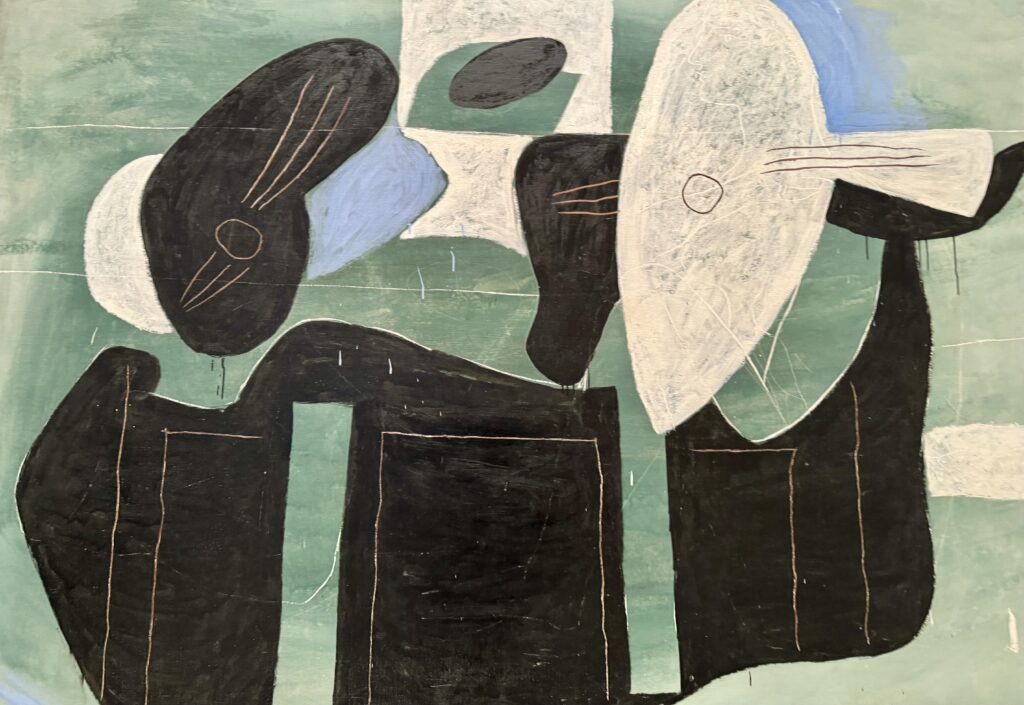
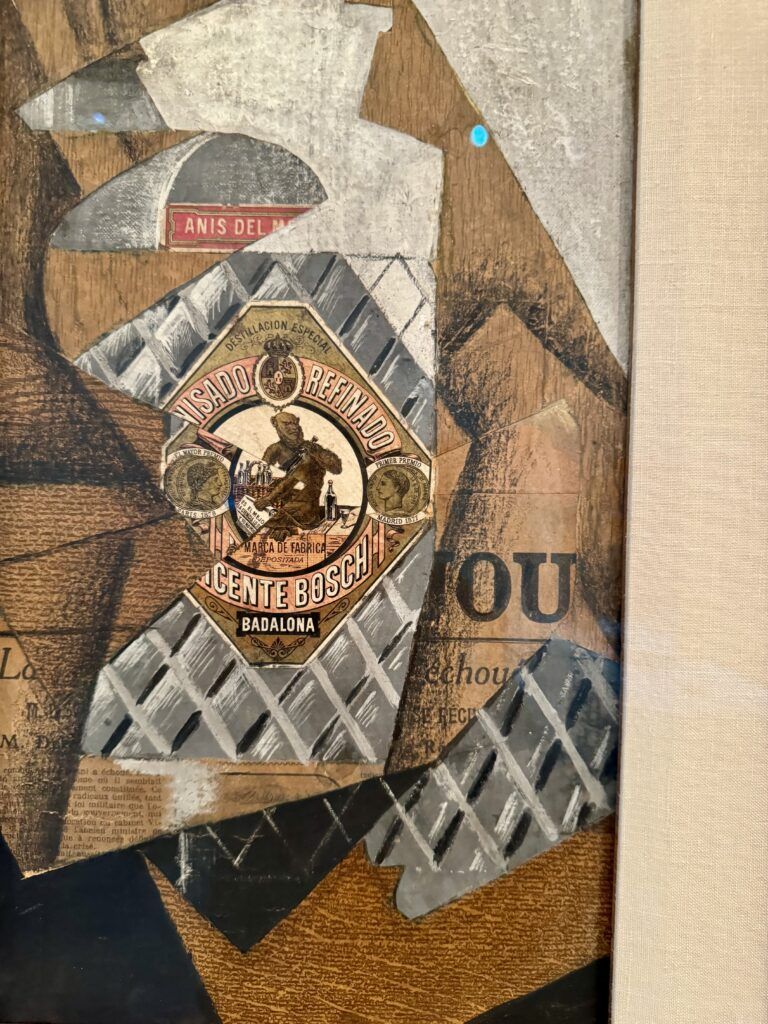
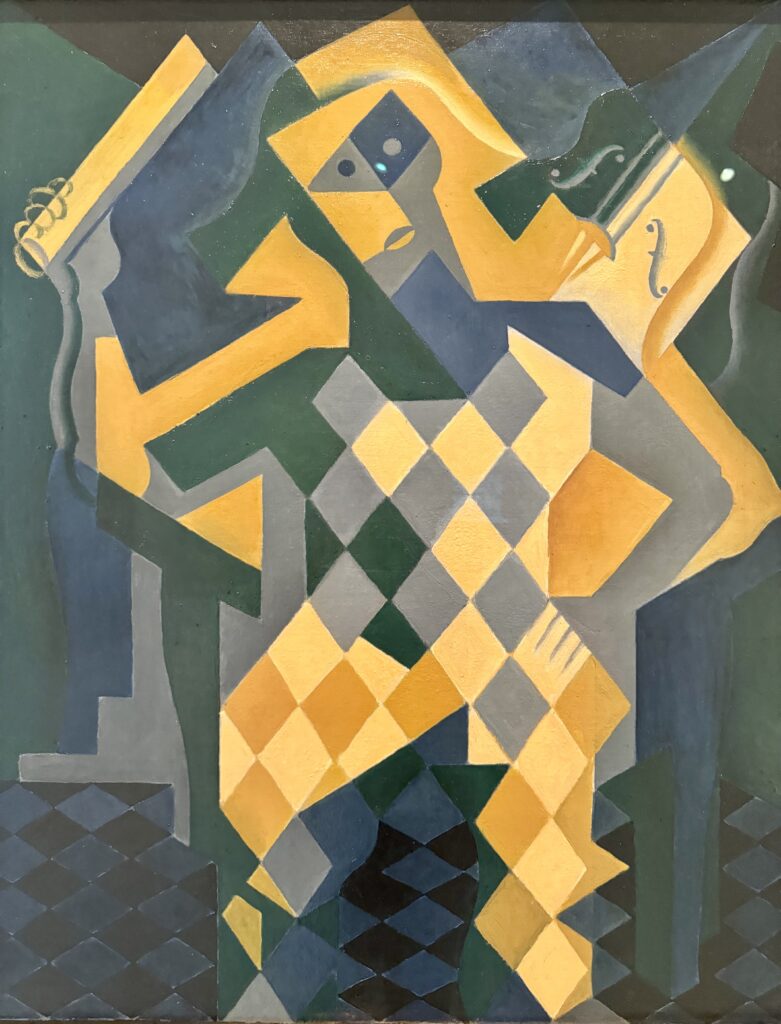
Juan Gris Paintings
The museum has an important collection of paintings by Juan Gris. Though not as well known as Picasso and Braque, he was the third key figure in the development of Cubism.
Gris brought a distinctive approach to Cubism.
He had a precise and methodical style. It incorporated clearer shapes, an acrobatic lightness, and brighter colors. Instead of taking color out — like the other Cubists — he put color in.
Gris’ paintings include still lifes, portraits, musical instruments, and scenes with a level of complexity and harmony that set his work apart from that of his contemporaries.
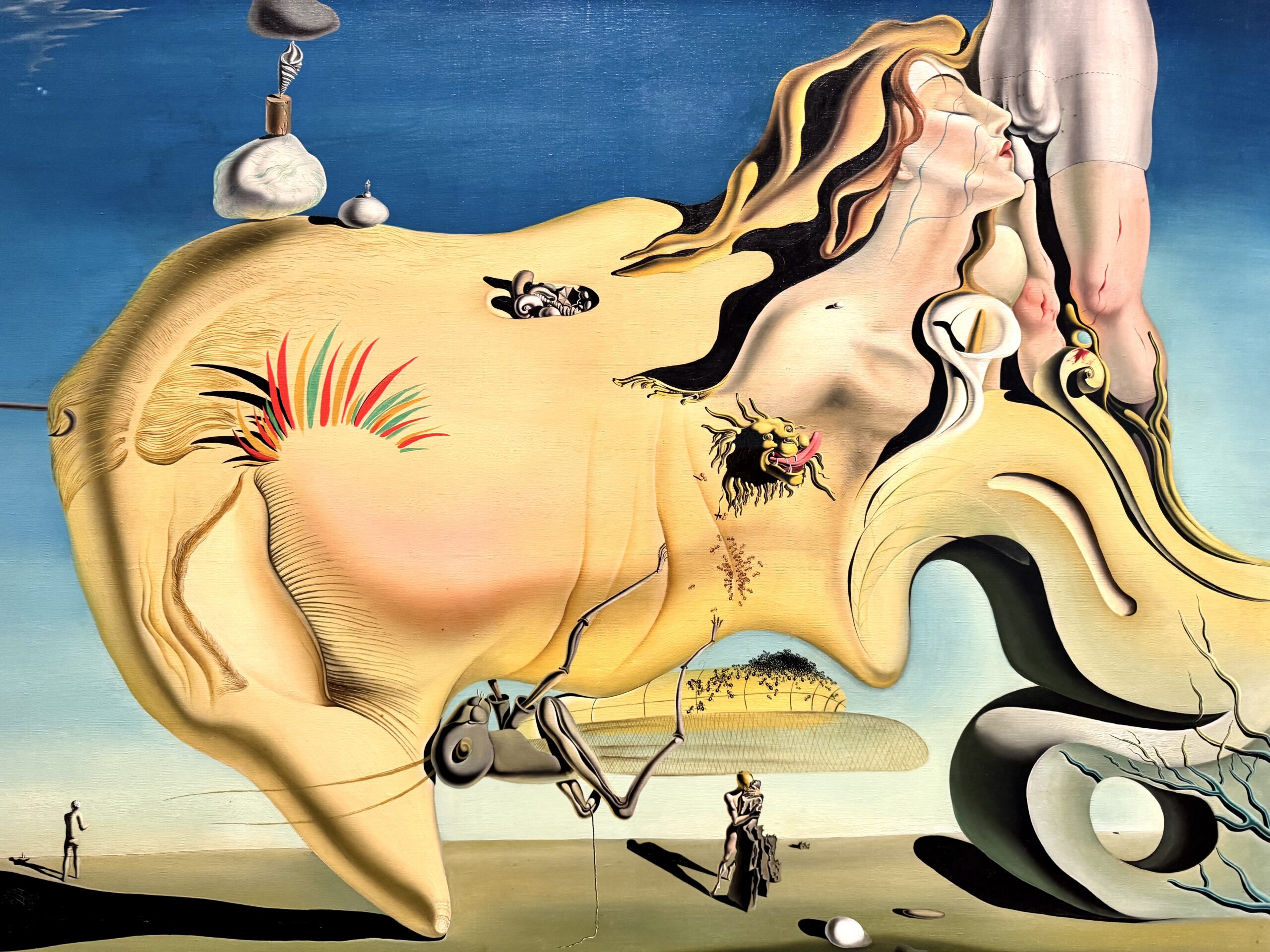
Dali, Face of the Great Masturbator
When you think of Salvador Dalí, his flamboyant character and signature waxed mustache instantly come to mind.
Dalí was a self-described eccentric who reveled in the spotlight, enjoying the allure of wealth and fame.
His art is as remarkable and striking as his personality. He was a master of Surrealism.
Dalí delved into the realm of dreams and the subconscious to create vivid, bizarre landscapes that challenge our perceptions of reality.
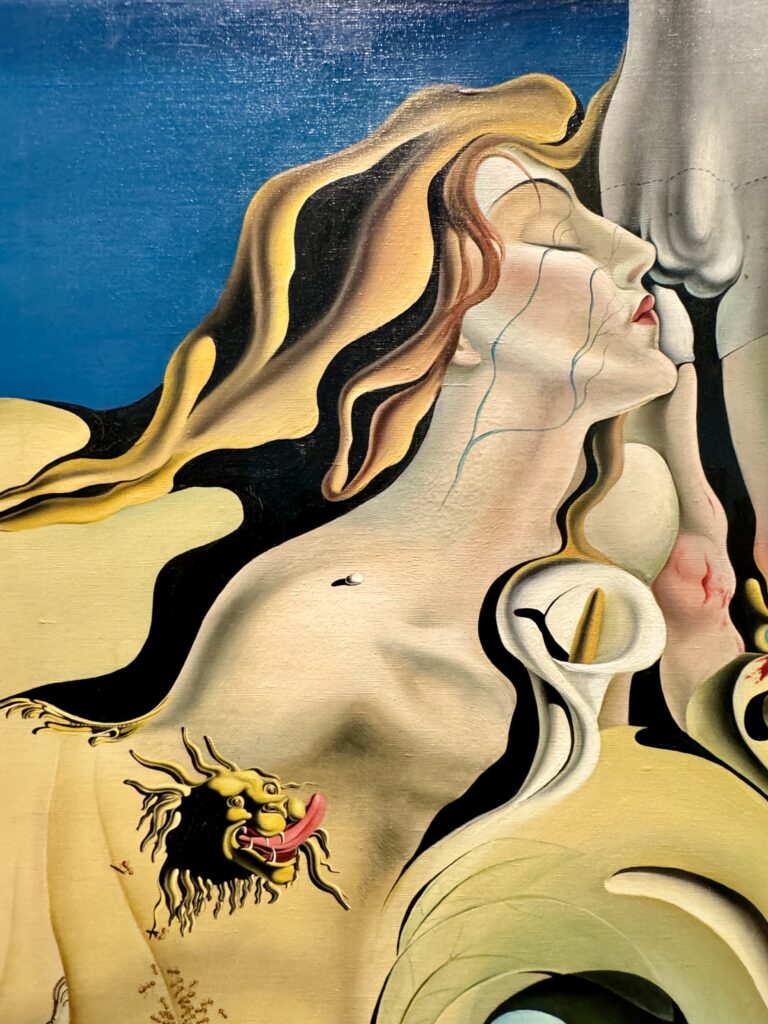
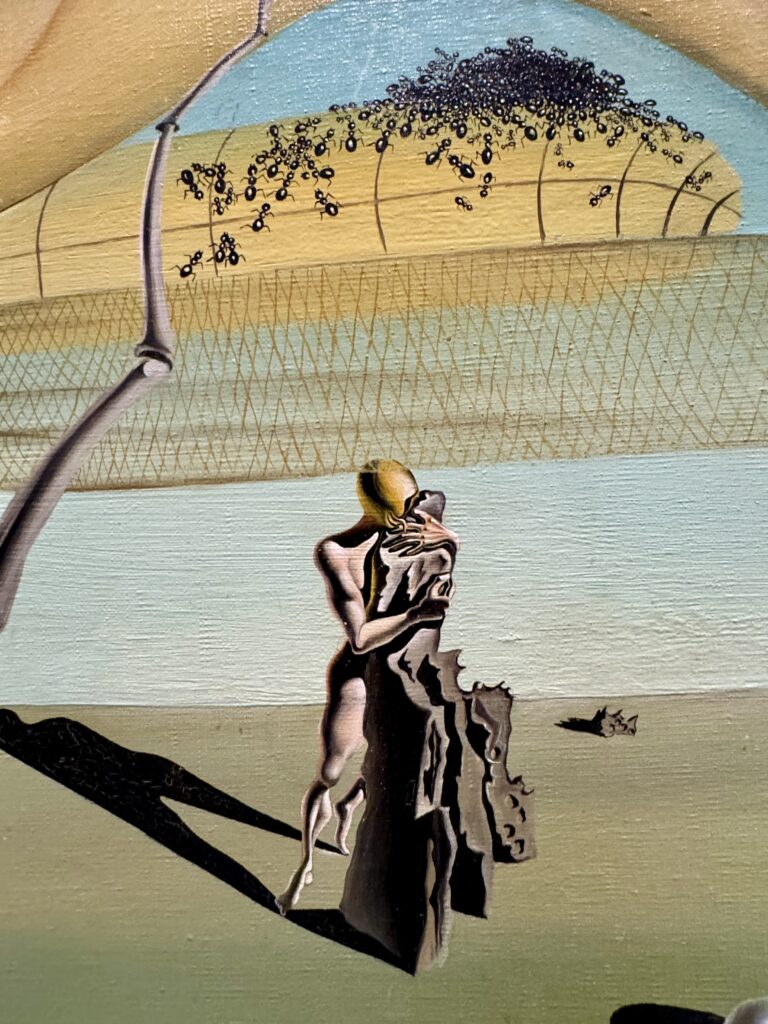
The Face of the Great Masturbator is one of Dalí’s most famous paintings.
It’s full of complex symbolic imagery and fantasy, reflecting Dalí’s obsession and anxieties over death, decay, and sex.
You see a distorted face, probably a self-portrait or personification of Dali, that seems shunted into the landscape. Eyelashes symbolize seduction. Ants and insects represent decay and Dali’s disgust with sex.
The shells for ears symbolize his father’s voice.
The hook at the top of the head means he was “hooked” by Gala. Pieces of stone on the head represent his guilt over failing to give her a sex life.
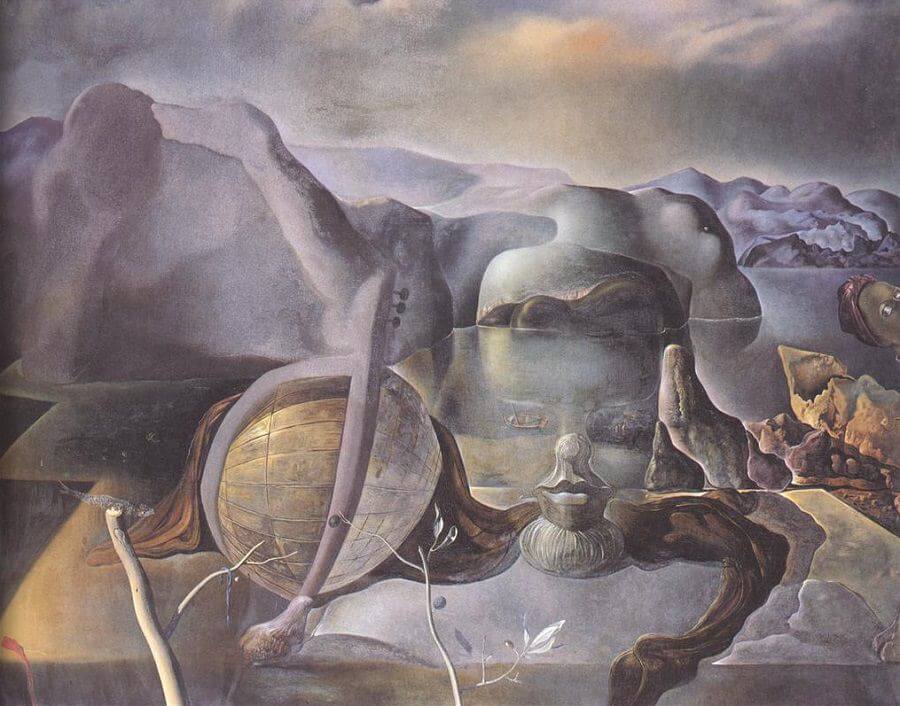
Dali, Endless Engima
Another ambiguous Dali work in the museum is Endless Enigma.
It’s a painting that reflects his fascination with double images, where one set of images forms another distinct set of images when viewed differently.
There are six different images that overlap and form what Dali called “imminent metamorphoses” — whereby one object becomes another object.
You can see a dog, a boat, a fruit dish, a horse, a person’s for, and a recline man.
Another of Dali’s double image paintings in the museum is The invisible Man. The “man” is made of up yellow clouds, ruined architecture, and a waterfall.
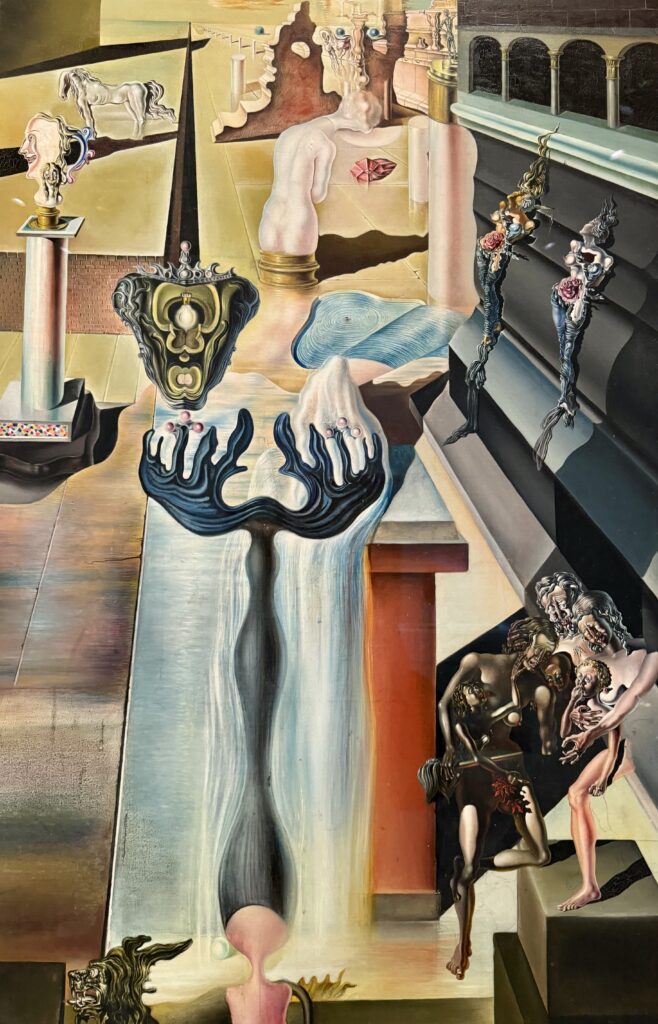
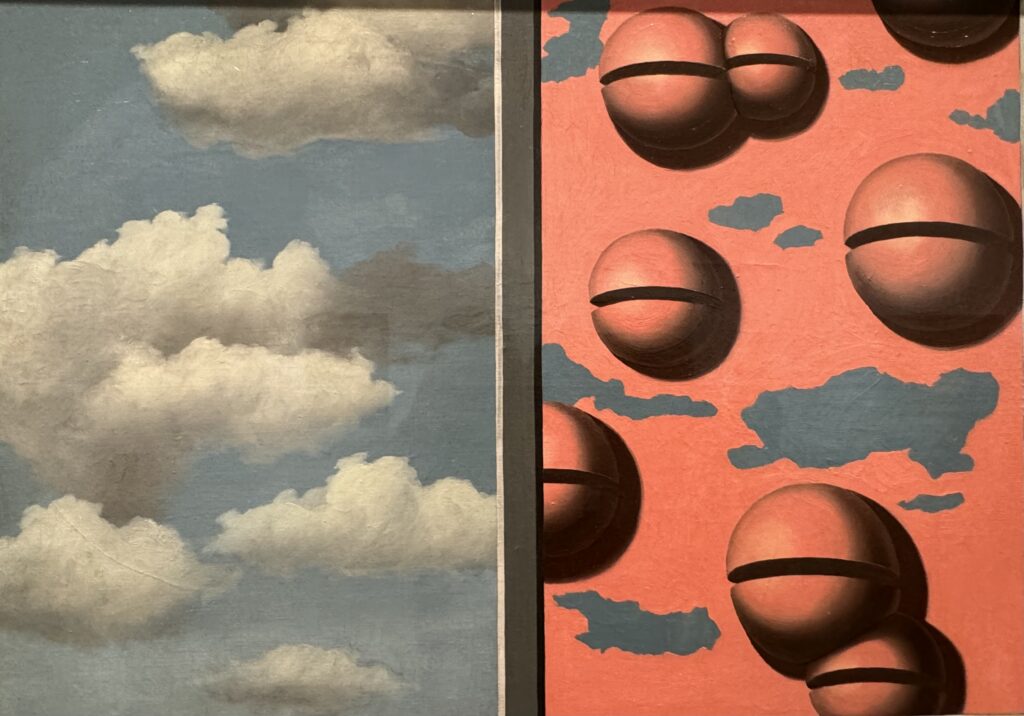
Rene Magritte, Pink Bells, Tattered Skies
Rene Magritte was another key figure in there Surrealist movement, but with a very different style than Dali.
His artwork is witty and subverts the laws of nature. Magritte plays with ordinary objects in an unusual context, forcing the viewer to reconsider what they see and question their perception of reality.
Pink Bells, Tattered Skies is part of his Empire of Light series. In the painting, half the canvas is filled with bells and half is filled with clouds. Both are recurring Magritte motifs.
The bells float in the air, free of their weight and function. The fluffy clouds float effortlessly as well. The chromatic contrast adds to the feeling of unease.
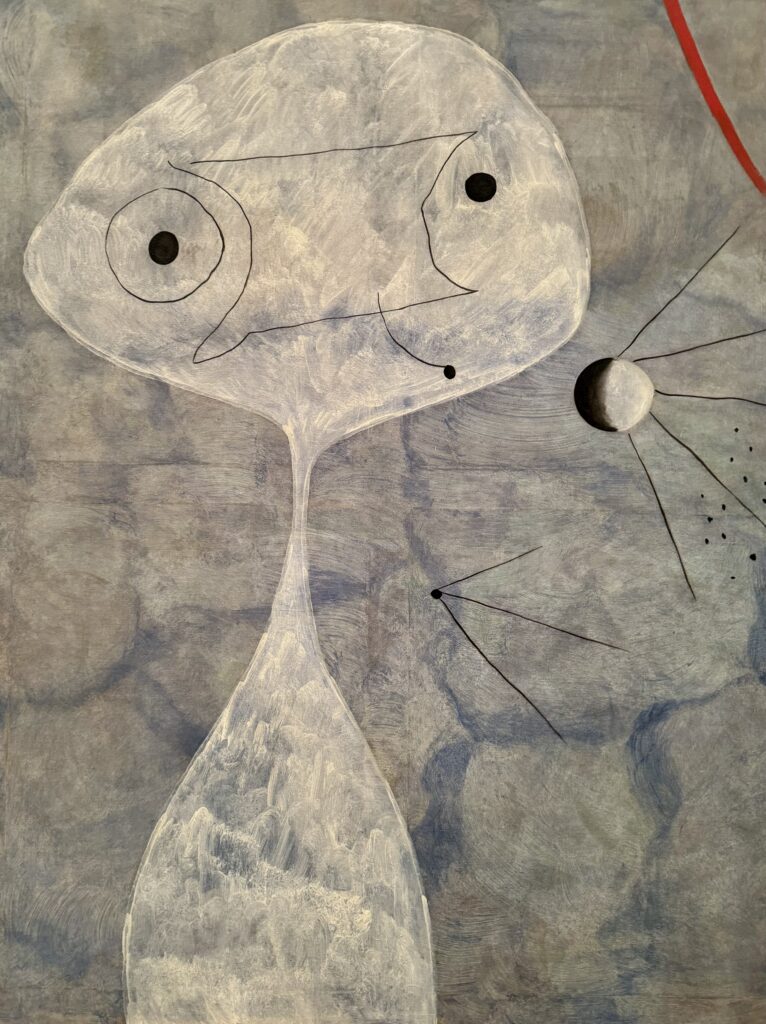
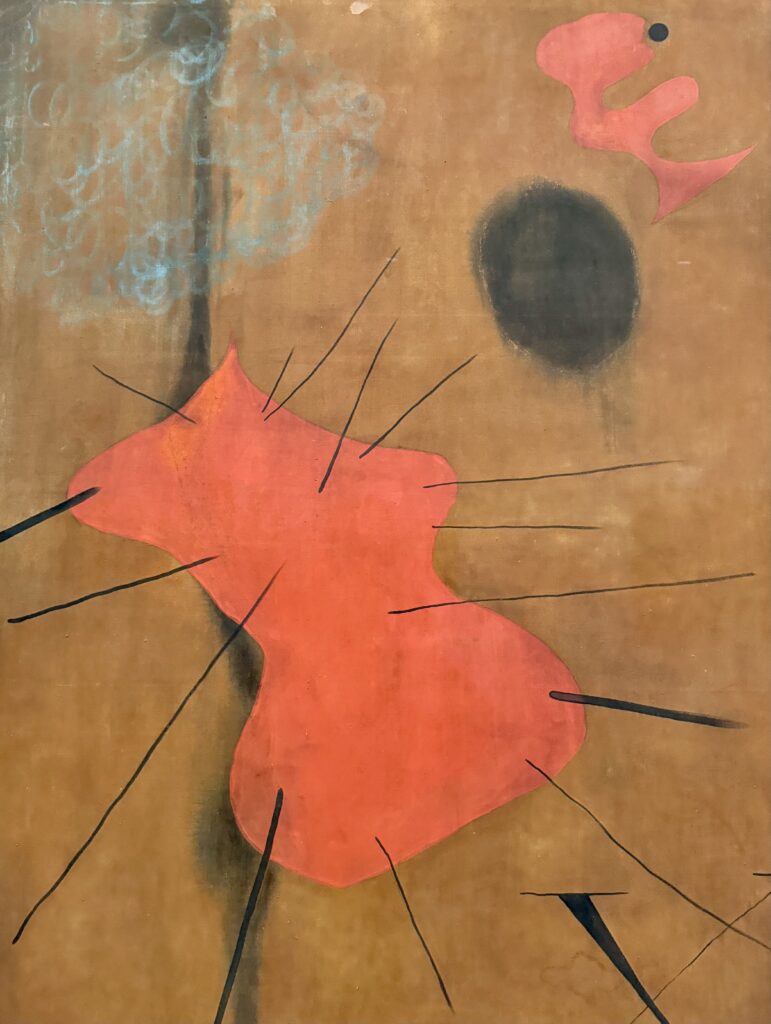
Miro Paintings
The art of Joan Miró defies any straightforward classification.
He’s often linked with the Surrealist movement, though he never officially joined it. He was a pioneer of automatism, which is a creative method for accessing the unconscious mind.
Miró’s oeuvre is marked by a relentless pursuit of innovation and magical, dreamlike abstraction. Similar to Dalí, Miró balanced Surrealism’s embrace of spontaneity and automatism with meticulous planning and precision edges.
Man with a Pipe was created when Miro was evolving toward Surrealism. The figure, drawn in a simplified way, is almost part of the invented space.
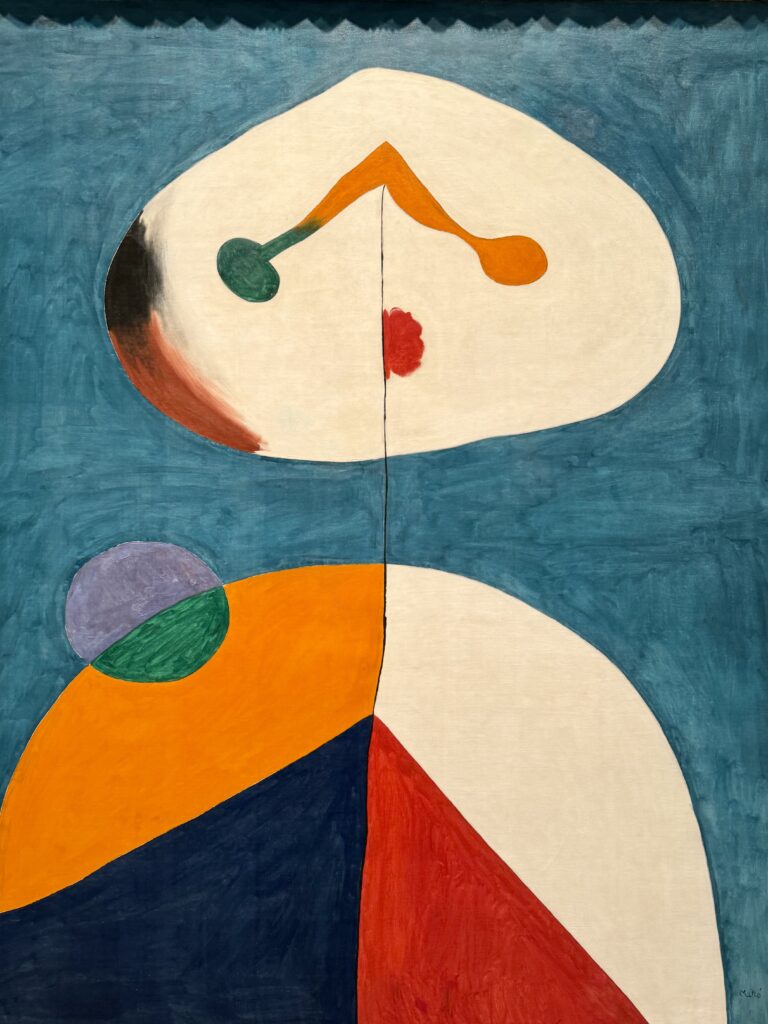
In The Red Spot, Miro abstract shapes and forms that suggest living organisms or natural elements, without directly imitating them.
Probably the most important Miro painting at the Reina Sofia is Snail, Woman, Flower, Star.
It’s part of a series the artist called “wild paintings.” The painting expressed the artist’s fear at the rise of fascism.
It’s a dreamlike composition that reflects his interest in the natural world, the feminine form, and celestial bodies, all rendered through his abstract and biomorphic lens.
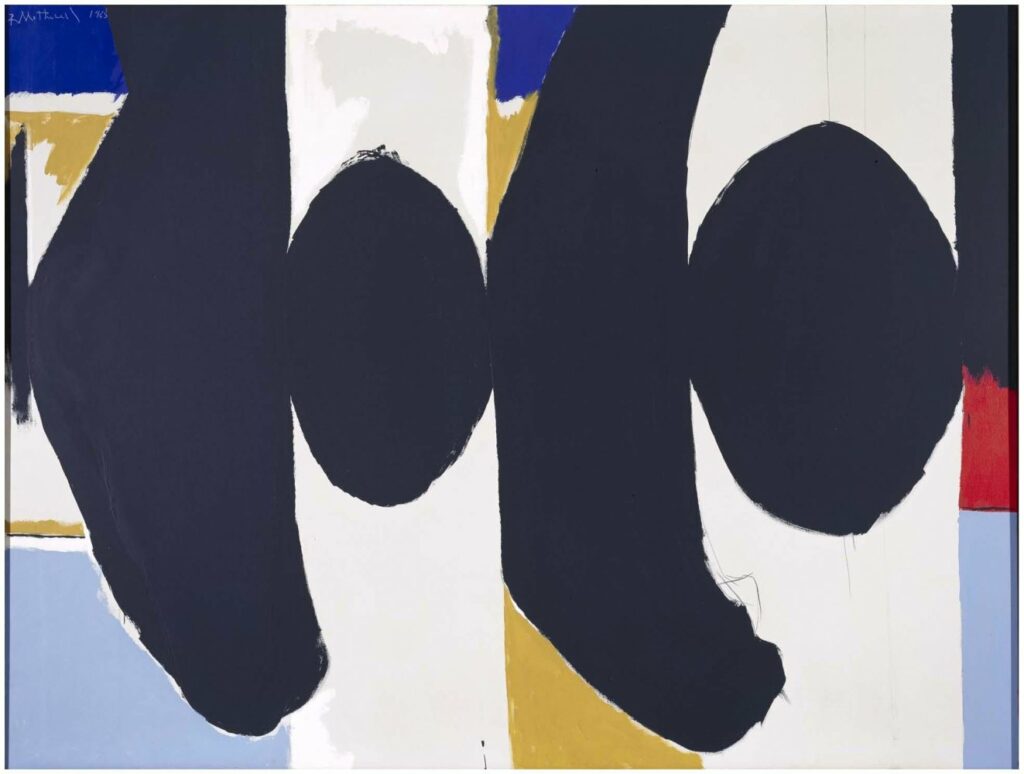
Post War Abstraction
On the fourth floor, you’ll find artworks from artists on both sides of the Atlantic, all with a post war theme.
You’ll find abstract pieces by Hans Hartung, Antoni Tapies, Angel Ferrant, and later Surrealist works by Dali and Miro.
American artists represented include Clyfford Still, Robert Motherwell, and Mark Rothko.
From a historical point of view, you’ll also find the political films of Isidore Isou and Maurice Lemaitre. In Room 404, you’ll see photos of Spain from the 1950s.
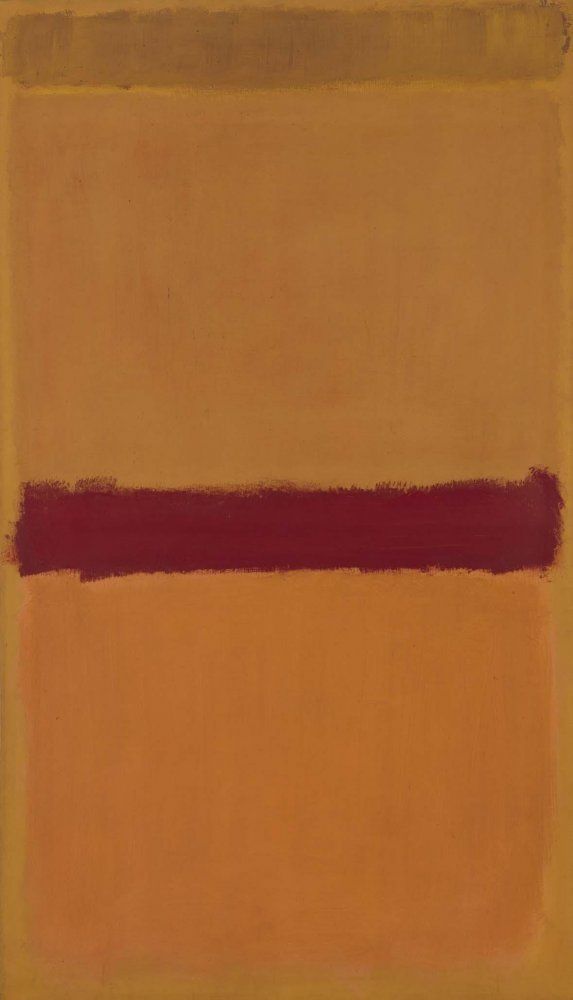
Roy Lichtenstein, Brushstroke
As you enter the museum courtyard, the first artwork you’ll see is Lichtenstein’s famous Brushstroke.
Lichtenstein was a prominent American pop artist. Like Andy Warhol, he sought to blur the boundaries between “high” art and popular culture.
Lichtenstein is best known for his comic strip-inspired paintings, and was particularly fascinated with consumerism.
But, beginning in the 1980s, he adopted the image of the brushstroke into a monumental sculpture.
It’s a parody of the act of painting, questioning the authenticity of art in an era dominated by mass media and consumer culture. It was a poke in the eye toward the purported deep meaning of Abstract Expressionist paintings.
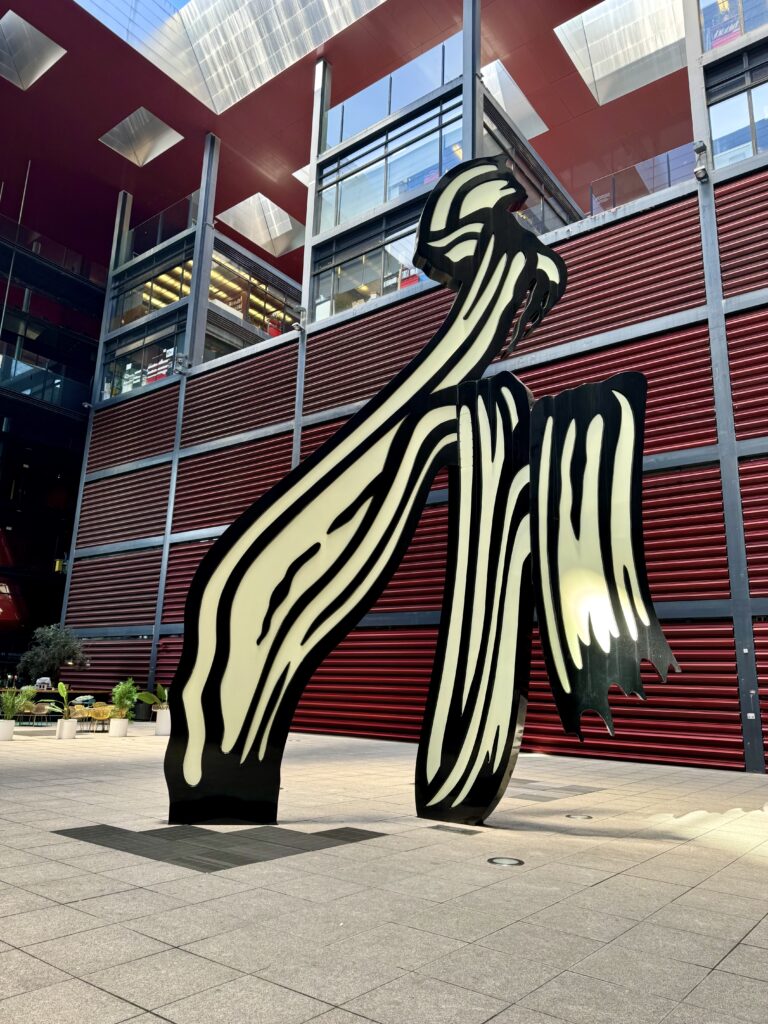
Practical Guide & Tips For The Reina Sofia
Address: Calle de Santa Isabel, 52, Centro
Hours: Open daily, except closed Tuesday, from 10:00 am to 9:00 pm.
Tickets:
Tickets are 12 euros.
Click here to pre-book a skip the line ticket, which you’ll want to do to avoid long lines. You can also buy a combination ticket for the Reina Sofía, the Thyssen-Bornemisza, and the Prado.
The audio guide is 4.50 euros. If you’re not on a tour, I would definitely get one. There is almost no informational signage in the museum.
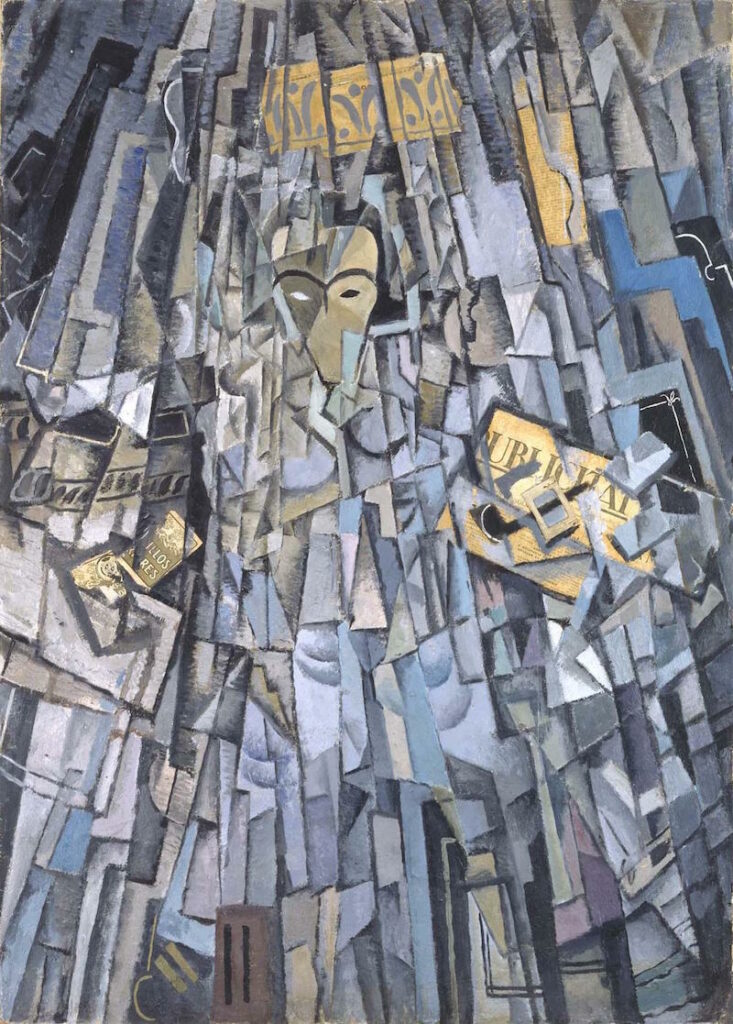
The museum is free of charge on Wednesdays to Mondays (closed Tuesdays) in the evening from 7:00 pm to 9:00 pm, and Sundays from 1:30 pm to 9:00 pm.
Expect crowds at these times. But it won’t be terrible. You may have to wait in line for 30 minutes or so, unless it’s summer.
Pro Tips:
The museum does allow non-flash photography, which made me happy. Such a relief not to hear guards yell “no foto!” Previously, until September 2023, no photograph was allowed at all in the museum.
I would plan to budget 2-3 hours to see the 2nd and 4th floors, more if you want to see the temporary exhibitions. If you’re pressed for time, stick to the 2nd floor for the most famous masterpieces.
There are lockers with a € 1 deposit near the entrance to store bags.
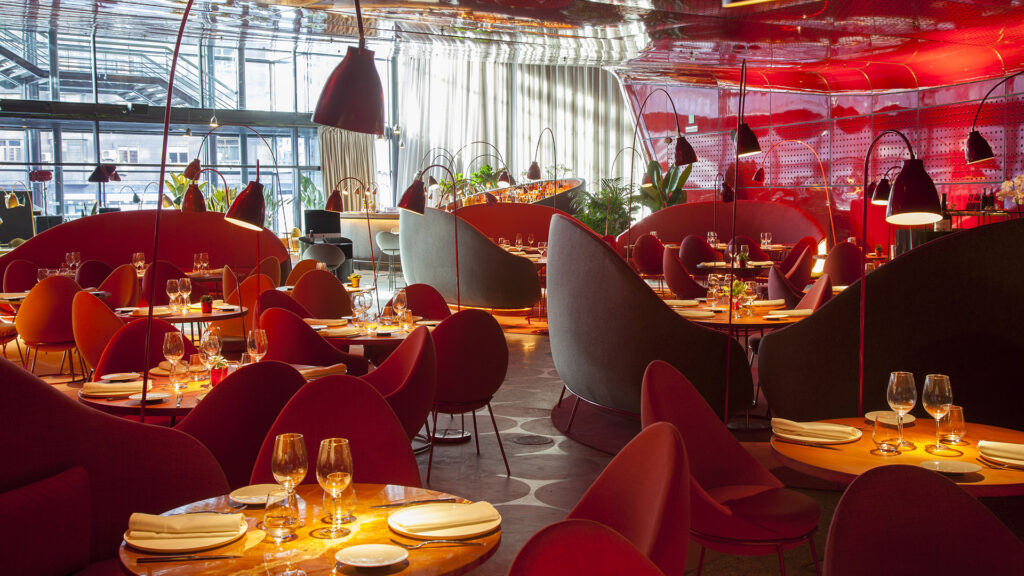
Nubel
The Reina Sofia has a lovely restaurant named NuBel. The name is a riff on the museum’s architect Jean Nouvel. NuBel translates roughly to beautiful cloud.
The restaurant is simply stunning and sometimes hosts live music. You can get brunch, tapas, or have afternoon tea.
Is the Reina Sofia Worth Visiting?
100% yes!
The Reina Sofia is worth visiting just to see Guernica and its pairing with the Picasso studies and photos. It’s overwhelming and powerful. If you like Surrealism, you’re also in for a treat.
However, a quibble. The Reina Sofia bills itself as the modern art museum in Madrid. I think the Thyssen-Bornemisza Museum, another part of the “Golden Triangle of Art,” is a far superior museum and beats it on the Modernism score.
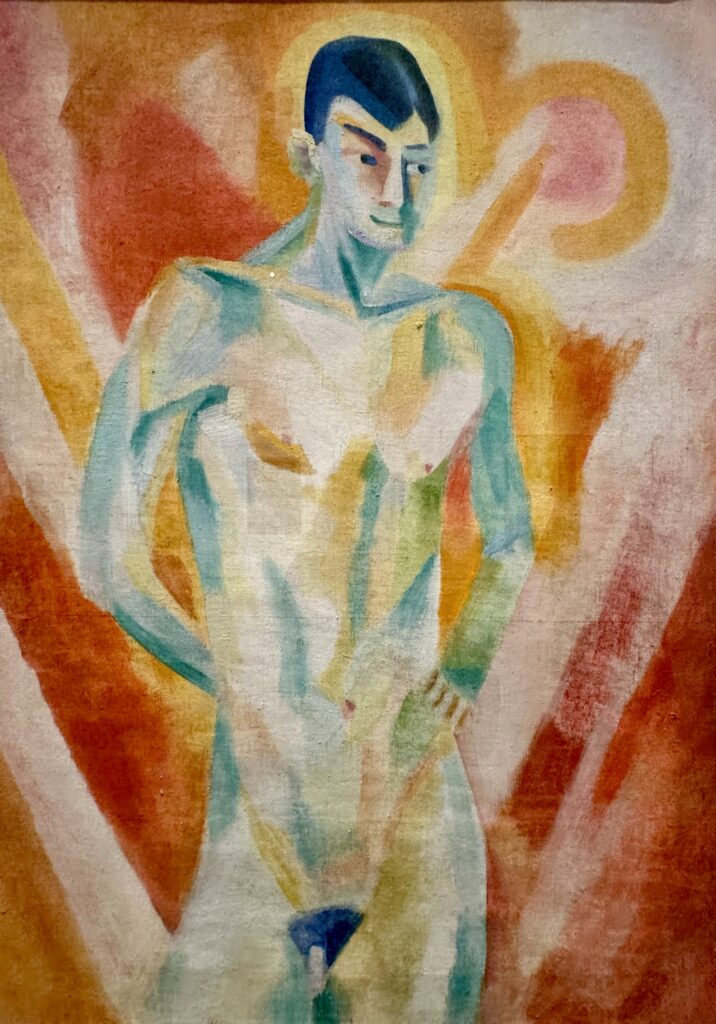
The Thyssen has an absolutely splendid array of modern art, with all the “isms” on display. And, unlike the Reina Sofia, it’s not just limited to Spanish artists.
My only other slight gripe is the museum is disorganized, with a labyrinthian layout. There is no map or paper floor plan to help you navigate.
There’s also no explanatory panels. So you’ll need this Reina Sofia guide to know what to see!
I hope you’ve enjoyed my guide to the Reina Sofia. You may find the other related travel guides useful:
- 10 day itinerary for Andalusia
- Most Beautiful Towns in Andalusia
- 3 day itinerary for Seville
- 3 day itinerary for Barcelona
- 2 day Itinerary for Madrid
- 33 secret towns in Spain
- 10 day itinerary from Madrid to Seville
- 10 day itinerary from Barcelona to Bilbao
- 10 day itinerary for Basque Spain
- 2 day Itinerary for Bilbao
- 1 day in Toledo itinerary
Pin it for later.

